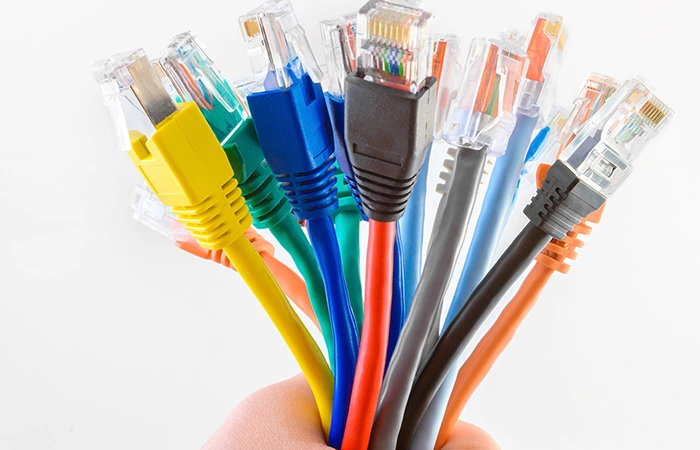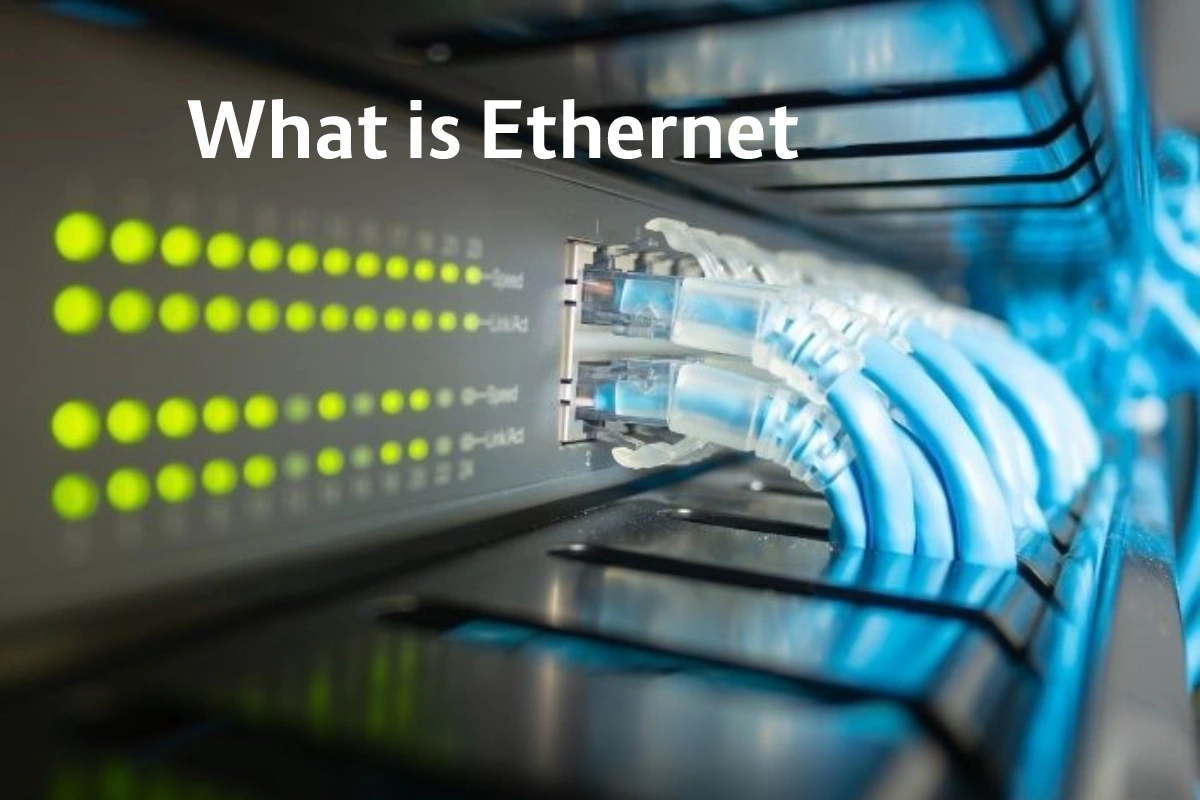Ethernet is the old technology for connecting devices on a wired local area network (LAN) or vast area network (WAN). It allows them to communicate through a protocol set of network rules or language Common. So that other devices on the same campus or local area network segment can recognize, receive, and process the information. An Ethernet cable is the physical, encapsulated wiring over which data travels.
Compared to wireless LAN (WLAN) technology, Ethernet is typically less vulnerable to outages. It can also offer greater network security and control than wireless technology.
Table of Contents
Why is Ethernet Used?
Ethernet connects devices on a network and is still a popular network connection. For its high speed, security, and also reliability, Ethernet is use for local networks used by specific organizations—such as company offices, school campuses, and hospitals.
Initially, Ethernet became famous for its low price compared to competing technology, such as IBM’s Token Ring. As networking technology advanced, Ethernet’s ability to evolve and deliver higher performance levels while maintaining backward compatibility ensured its continued popularity.
How Ethernet Works
The IEEE specifies in the family of standards called IEEE 802.3 that the Ethernet protocol touches both Layer 1 (Physical Layer) and Layer 2 (Data Link Layer) in the Open Systems Interconnection (OSI) network protocol model. ).
It describes two units of transmission packet and frame. The frame includes not only the payload of the data being transmitted but also the following
- the physical medium access control (MAC) addresses of the dispatcher and also receiver;
- virtual LAN (VLAN) tagging and superiority of service (QoS) information; Y
- error correction information to notice transmission problems.
Each edge is wrapped in a packet covering several bytes of information to establish the connection and also mark where the structure begins.
Types of Ethernet Cables
The IEEE 802.3 working group approved the first Ethernet standard in 1983. Since then, the technology has continued to evolve and embrace new media, higher transmission speeds, and changes in frame content
- 3ac was introduced to accommodate VLAN and priority tagging.
- 3af defines Power over Ethernet (PoE) as crucial for most wifi and Internet Protocol (IP) telephony deployments.
- 11a, b, g, n, ac, and axe define the equivalent of Ethernet for WLANs.
- 3u introduced 100BASE-T fast with up to 100 Mbps data transmission speeds. The term BASE-T indicates the use of twisted-pair cabling.
Gigabit it has speeds of 1,000 Mbps 1 gigabit, or 1 billion bits per second (bps) 10 GbE, up to 10 Gbps, etc. Network engineers use 100BASE-T primarily to connect end-user computers, printers, and also other devices, manage servers and storage, and achieve higher speeds for the backbone network segments. Over time, the typical rate of each connection tends to increase.
Advantages and Disadvantages

It has many benefits for users, so it has become so popular. However, it also has some disadvantages.
Advantages
- Relatively low cost;
- compatibility with previous versions;
- generally noise resistant;
- good data transfer quality;
- velocity;
- reliability;
- data security the usual firewalls can be use.
Disadvantages
It is intend for smaller and shorter distance networks.
- Mobility is limited.
- Using longer cables can create crosstalk.
- It doesn’t work well with real-time or interactive applications.
- The increase in traffic causes the speed of the Ethernet to decrease.
- Receivers do not acknowledge receipt of data packets.
- It is difficult to determine which specific cable or node is causing the problem when troubleshooting.
Ethernet vs. Wifi
Wifi is the most popular type of network connection. Unlike wired connection types, such as Ethernet, it does not require a physical cable connection; data is transmitted via wireless signals.
Differences Between Ethernet And wifi Connections
Ethernet connection
- It transmits the data through a cable;
- limited mobility: physical line required;
- more speed, reliability and security than wifi;
- constant velocity;
- no data encryption is need;
- lower latency; Y
- more complex installation process.
Wifi connection
- It transmits the data through wireless signals instead of cable;
- better mobility since no wires are need;
- it is not as fast, reliable, or secure as Ethernet;
- more comfortable users can connect to the internet from anywhere;
- inconsistent speed wifi is prone to signal interference;
- requires data encryption;
- higher latency than Ethernet;
- more straightforward installation process.
Conclusion
Ethernet is a family of wired computer networking technologies usually used in local area networks, metropolitan area networks and wide area networks. Therefore it was commercially presented in 1980 and first standardize in 1983 as IEEE 802.3.
Also Read: What is Domain Name – How to Add a Domain to My Hosting?

